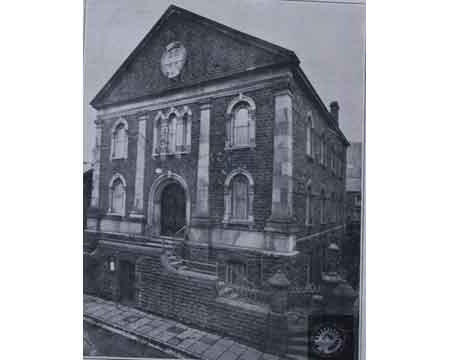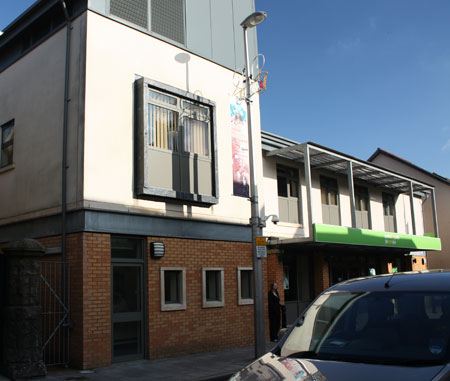Salem(1855)Welsh Baptist, Hannah Street, PorthBuilt: 1855 , Extended or Rebuilt: 1875 [Sittings: 900]
 Reading the history of this cause as written in the MGCS one gets a somewhat misleading impression that Salem was a branch cause of Nebo, Ystrad. However, the origins of this cause lay with Soar, Penygraig.  Image © Copyright Glamorgan Archives - Reference: MGCS/CS/54.014
Initial meetings were held in the early 1850's at Cymmer and 'Little America' whilst the participants were members of Soar. However in 1853 a misunderstanding arose between these members and the minister of Soar which resulted in the members leaving the church and attending Carmel, Pontypridd whilst still holding their own meetings at the places mentioned above.
With an increase in attendance, larger premises were required. The building was located where the Central Cinema stood. Although I understand it was subsequently used by the Salvation Army before their own barracks were constructed.
Yet with the increasing industtial development of the area an even lager chapel, with a most fine interior, opened in the late 1870's, was built at a total cost of ₤4,150. In one of the episodes of BBC's 'The Long Street' there is a fleeting glimpse of Hannah Street and the camera pans across to reveal Salem.
Salem became a 'Mother' in its own right to Hermon(Pontygwaith), Ainon(Ynyshir), Pisgah(Cymmer), Seion(Porth) plus the English cause of Tabernacle, Porth. Interestingly, one of its ministers, Rhys Bevan Jones, would also later serve at Ainon and Tabernacle.
Although he did not serve here for long, Benjamin Davies is better known for translating and publishing Joshua Thomas' Welsh Baptist History.
Salem could boast the largest membership of any of the Welsh Baptist Association (East) churches in the 1890's.Naturally, this fell with the birth of its 'Daughters'. Yet it could still boast over 300 in the 1930's. Beyond that there was the inevitable steady decline with less than 20 at closure in 1997.
But sometime before this the main chapel became structurally defective and there was no alternative but to demolish it. The site is now occupied by Porth's 'Dole'.
Documemt Sources:-
MGCS 54/14
Trafodion 2003 pg 40.
Footnote: As far as the Rhondda is concerned, this is the final chapel mentioned in the Trafodion articles. I met the author at a chapel heritage day held in Merthyr some years ago. The history of Rhondda's chapels would be so much poorer but for the sterling work undertaken by him.
|